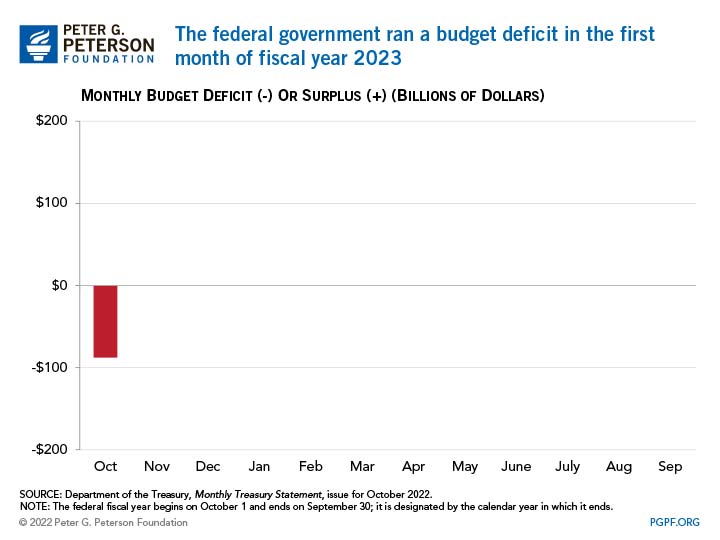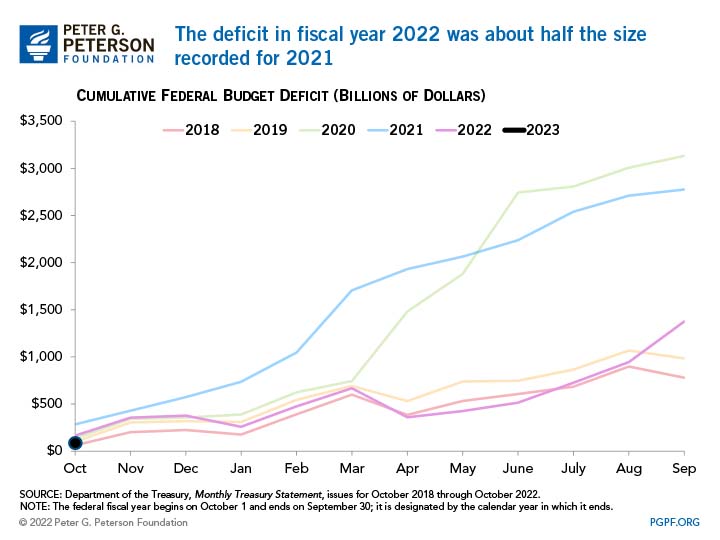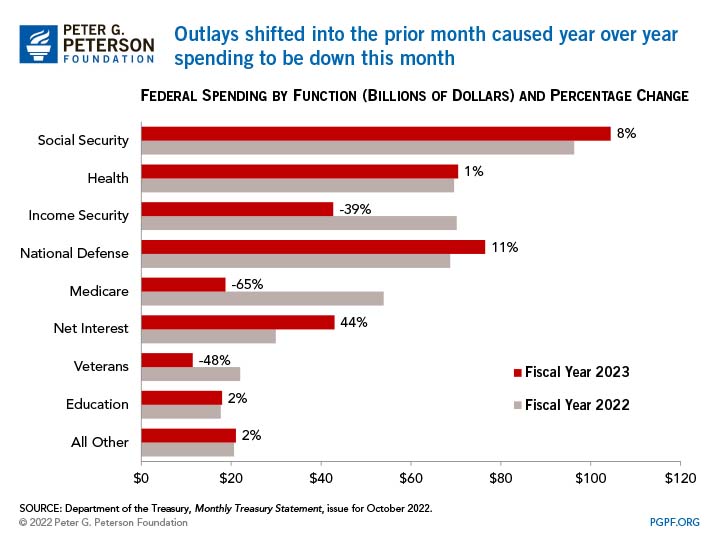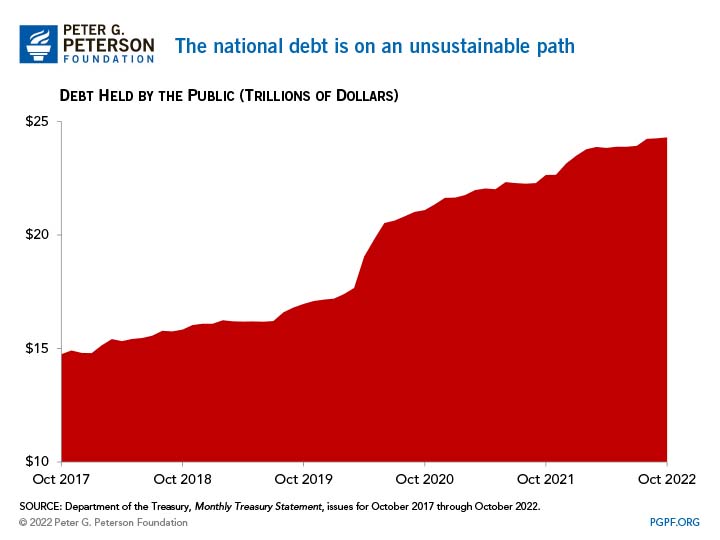You are here
Federal Deficit and Debt: October 2022
Every month the U.S. Treasury releases data on the federal budget, including the current deficit. The following contains budget data for October 2022, which was the first month of fiscal year (FY) 2023.
Current Federal Deficit

- Federal Budget Deficit for October 2022: $88 billion
- Federal Budget Deficit for October 2021: $165 billion
The federal government ran a deficit of $88 billion in October 2022, about half the amount recorded in October 2021. That decrease is due to both higher revenues and lower outlays relative to the previous year.
Because October 1 fell on a weekend in 2022, certain federal payments were shifted into September, which led to a decrease in outlays for the month. Without such shifts, the deficit for October 2022 would have been $63 billion higher, or $14 billion below last year’s level.
Cumulative Federal Deficit

- Cumulative Deficit Projected for FY23: $984 billion
- Cumulative FY22 Deficit: $1,375 billion
The Congressional Budget Office anticipates that the federal deficit for this fiscal year will decline relative to last year’s total, however it is expected the exceed $1 trillion in FY24 and then continue to increase.
The large decrease in outlays results from the waning federal response to the COVID-19 pandemic. The lack of recovery rebates for FY22, compared to two separate rounds of such payments during FY21, and the expiration of enhanced unemployment benefits and the Paycheck Protection Program, account for a sizeable portion of the decline in outlays. That decrease is partially offset, however, by the long-term cost of student loan forgiveness, which the Administration calculates will increase outlays by $379 billion (and was recorded in September 2022). Net interest on the public debt also increased by $123 billion, year over year, primarily due to adjustments stemming from high inflation and rising interest rates.

Higher collections of individual income and payroll taxes accounted for the vast majority of the increase in revenues during FY22. That development is due in part to higher wages and salaries that have led to increased tax withholding, especially among workers with relatively high incomes. In addition, pandemic-related legislation allowed for deferral of certain payroll tax payments into the early months of FY22.

National Debt

- Debt Held by the Public at the end of October 2022: $24.3 trillion
- Debt Held by the Public at the end of October 2021: $22.6 trillion
Since the financial crisis in 2008, debt held by the public has nearly tripled relative to the size of the economy and is projected to grow even more in the future. Debt and deficits are on an unsustainable upward trajectory. With the arrival of a new Congress in January, legislators should work with the Biden Administration to create bipartisan solutions to improve the country’s fiscal outlook.
